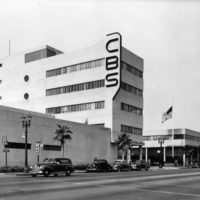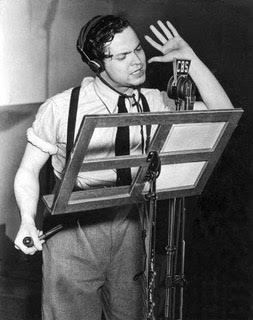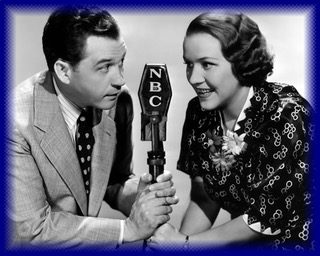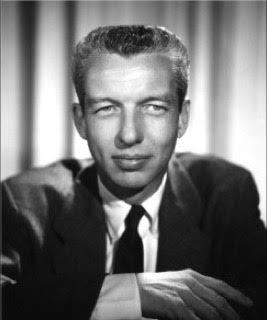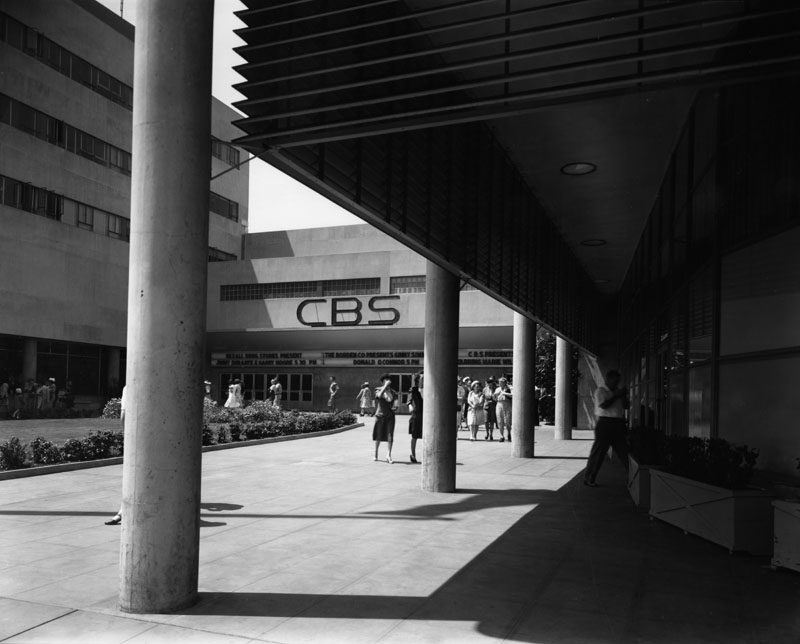Other than family and friends, radio was my first contact with the outside world, providing palatable lessons in enculturation. More encouragingly, it taught me that there might be intelligent life outside my conventional and emotionally strangled household.
When I was a kid in the late 1940s, the giant console consumed the corner of the living room. That amber piece of furniture was taller than I was so it was up to my parents to choose the programs. My mother would turn the round dial left or right and out would pop Burns and Allen or Our Miss Brooks. We’d group around in the living room, all of us laughing at the same things: “cheapskate” Jack Benny’s long reverberant walk to his vault, Gracie Allen’s scatterbrained responses or wooden dummy Charlie McCarthy’s scathing insults to his “friend,” Edgar Bergen. After the radio had been on for a while we could smell the vacuum tubes heating up, just short of burning, emitting an almost comforting balm.
As the years passed, the radios got smaller. I had one in my room right next to the bed and barely left it—at least until television entered our lives when I was around seven. But radio was a more personal medium and gripped me until my teens. I could snuggle down right next to it, resting my ear next to the speaker, tricking my brain into entering a different world. I felt a part of the story because I had to imagine the situation and the characters. What did The Shadow look like when he wasn’t invisible? What was it that fell out of Fibber McGee and Molly’s closet when that door was opened each week and everything came tumbling out?
The heyday of radio was among the last times in our culture when we all enjoyed the same forms of entertainment, providing a collective social denominator. We shared a language and database. Unlike the polarized red/blue media spectrum today, radio made the country smaller, uniting urban and rural audiences. Many housewives in the 1940s listened to the soaps (daytime dramas) and eagerly conjectured what might happen on tomorrow’s episode of The Second Mrs. Burton or The Romance of Helen Trent. Most everyone knew that if asked, “Who knows what evil lurks in the hearts of men,” the obvious answer was, “The Shadow knows.” All kids jumped when invited by Fred Foy of The Lone Ranger, to “return with us now to those thrilling days of yesteryear.”
If 70% of the population went to the movies every week in the early 1940s, surely a higher percentage listened to their favorite radio shows almost nightly in the comfort of their own homes and for free. Many who had lost their jobs during the Depression struggled to keep up the payments when they couldn’t afford any other kind of entertainment. Radio became a welcomed member of the family. Squabbles would ensue when favorite shows were on opposite one another, which happened as more programming was offered by the competing three networks. In my family there were calm discussions about whether to listen to A Date with Judy or The Falcon (Judy always won), but rancor when deciding between Ozzie and Harriet, Joan Davis, or Life of Riley. On Saturdays, though, it was always Your Hit Parade over Gangbusters. No contest. These growing options offered us a rare opportunity as a family to negotiate and hear each other out—one of the few times we had much interaction. The stakes were high as there was no avenue for saving shows, no means of recording, at least not at home.
The top shows during the 1940s continued to be comedy and drama with Fibber McGee and Molly dominating the ratings for several of those years. Bob Hope, Jack Benny, and Fred Allen exchanged positions in the ratings, often eased out by Lux Radio Theater or Walter Winchell. My parents preferred the comedies while I devoured the crime shows.
The advent of television in our lives in 1950 didn’t erode my radio addiction. When I’d take a bath, I’d plug in the radio safely across the room and listen to the eerie stories told by The Whistler—“I… am The Whistler and I know many things for I walk by night”—not emerging from the cooled water until the show was over. On Saturday mornings, I looked forward to “missions of daring in the name of interplanetary justice” with Commander Corry and Cadet Happy on Space Patrol. Even though it was also on TV, I preferred the radio version because it demanded more creative participation to bring it to life. As media entertainment became more complex and diversified, television became an irresistible cultural temptation, ushered the death of episodic radio, and dealt a blow to the movie business as well.
Our neighborhood was a friendly suburban block in Los Angeles, the women—all of them housewives—sharing gossip over coffee and cigarettes during the day. On weekend evenings, families would get together and entertain one another, singing and playing the piano, a throwback to an era even before radio. It was at one of those evenings of conviviality that I met Bob Bailey, a friend of a new neighbor.
I recognized his resonant baritone voice before I heard his name. He was the star of Yours Truly, Johnny Dollar, which was serialized each night on KNX, the local CBS radio station. Dollar was a freelance insurance investigator out of Hartford, “the man with the action-packed expense account.” Bob was warm and friendly and I hung on his every word. He had done other radio shows, too, but it was Dollar that made him famous. He had the most riveting blue eyes I’d ever seen but his short stature and slim build were made for radio more than television.
During one of those musical evenings Bob stunned me with a proposal.
“Pam, would you like to come with me to the studio on Sunday?”
I was thirteen. I wasn’t sure I had heard him correctly. “You mean, CBS?”
“Yeah. You can watch while we record.”
“Can I sit in the front row?
He laughed. “We’re not important enough for an audience. It’s just a small studio. You can watch with the director upstairs.”
“Oh, yeah. Yeah. Thanks.”
I sat there for the rest of the evening in both disbelief and excitement. I had given much thought to the anatomy of radio production but being inside a real studio raised my pulse beyond its normal limits, making it impossible to sleep that Saturday night.
Heading down to the CBS building, I held his script on my lap, feeling like I was in charge of the key to a treasure. As he navigated the congested Sunset Strip, I read his part aloud, imitating his tough-guy, clipped words. That amused him so much that he had me repeat my “performance” for the other actors when we arrived.
The building at Columbia Square was the epitome of Art Deco, constructed in 1938. The interior walls leading to the radio studios were curved, creating the feeling of a soothing maze. Yours, Truly, Johnny Dollar was recorded in a relatively small space so I was relegated to the upstairs viewing room. I could watch it all being recorded, see the sound man create creaking doors, replicate footsteps down a reverberant hall, set off a police siren. It made me smile when he dropped something in front of the mic that sounded just like a body falling. The sound man, in fact, was the busiest person on the floor, cuing up the catchy theme along with the ambient music and even the commercials. I observed the actors read the pages, then let them slip noiselessly to the floor. I learned what it meant to be a professional.
All five episodes for the week were recorded on the same day so we were there most of the afternoon. And I kept coming back for many Sundays after that. I couldn’t get enough.
I fell inextricably under the spell of show biz. Then during my junior year at UCLA, I became the first female disk jockey in Los Angeles radio, or so I was told. I had a one-hour themed program each Sunday, the same day I had spent with Bob Bailey years earlier.
But by the 1960s, commercial radio had transformed. CBS radio and the others had morphed to news and disk jockeys. No longer were there scripted narratives that sparked the imagination. Competition for the public attention had heated up. Most homes had at least one television set and many of those were now “in living color.” Soon radios would be pocket-sized, blasting out Top 40 hits.
After college, I went looking for a job in “the biz.” I had been offered a position as a reader at Twentieth Century Fox but put it off when I read about an opportunity in the research department at KNXT, the local CBS television affiliate located in Columbia Square where Yours Truly, Johnny Dollar had come to life, the same building that had fired up my teenage fantasies. The big, blocky building on Sunset now held the television station and what was left of CBS Radio and Columbia Records. I had to talk the HR person into hiring me because she was convinced I was overqualified (which turned out to be true). I had a puzzling but irresistible drive to get back in there.
The job, a clerical one, was boring. I was done with my daily tasks by late morning and I would furtively wander around, investigating history. Once in a while, someone would be recording at Columbia Records and I would sneak into sessions with Robert Goulet, the Byrds, and Andy Williams. I stayed late now and again so I could sit a few feet away from the local news anchor, Jerry Dunphy, as he read the six o-clock news.
One afternoon, after nearly falling asleep at my desk, I ventured out again, down the long curved hall. I spotted a corridor off to the left, one that I had missed in my previous peregrinations. It was all in shadow, and I could barely make out a sign over a door that read, “Studio B,” in typical Art Deco font. I looked to either side, reached for the handle and opened it slowly toward me. Was it my imagination or did it sound a little like the creaking door that always began each episode of Inner Sanctum?
My eyes took a moment to adjust to the semi-darkness. I heard a gasp. It was mine. Before me was a large radio studio, complete with seating for maybe three hundred people and a wooden stage at the front. For just a second, it was like I was entering a dream—the musty odor of that entombed studio, the dust on the back of the seats. Long a student of show biz history, I knew what I had found. Countless radio shows had been brought to life in this very place many decades earlier. Even with the dust, it looked as if it could have been last Monday. I could effortlessly envision Edgar Bergen, Eve Arden, Jack Benny, Eddie Cantor—legends performing before cumbersome mics.
Did I dare walk up past the empty rows and stand in that space onstage? I was afraid—of discovery, of being punished for entering the unlocked studio, of being away from my office too long—but more that I would be flooded with emotion, making it impossible to return to my desk in the sterile office down that labyrinthine hall. I wanted to live in this world, the one I had heard in my childhood, the one that would continue to exist only in memory. I backed out of the studio with tears in my eyes and didn’t know why.
Fifty years have passed since that unforgettable foray. Today, radio is bigger than ever—but in vastly different forms. More people listen to the radio than watch TV, according to Nielsen, only now it’s on a computer, a tablet, or a smartphone. Podcasts are ubiquitous, on demand 24/7. Fictional radio represents a small minority of the offerings. The top formats are country, news, talk, and pop contemporary hit radio. There is no longer a common cultural vocabulary. Audiences are offered so many choices, splintered into smaller camps than ever before.
Just a few months ago, there was an article in the paper about Columbia Square being declared a Los Angeles Historic-Cultural Monument. It would be rid of all the deadly asbestos, repurposed and rebuilt into a residential tower and office complex with an upscale restaurant downstairs. Soon people would likely be dining in the exact location where so many radio memories had been created, where legends had performed.
Would the diners know? And would they care? The magic created by radio is a quaint, anachronistic reference these days. Those of us who knew it well whose lives were directly shaped by the medium will also soon be gone. One can still listen to selected shows on satellite radio or on the media device of our choice, but it’s in an entirely different social and cultural context—perhaps never quite as “thrilling” ever again.
***
Image credits: feature image and image 4 © Los Angeles Public Library, image 1, image 2, image 3.
